Why small is beautiful when transforming old buildings
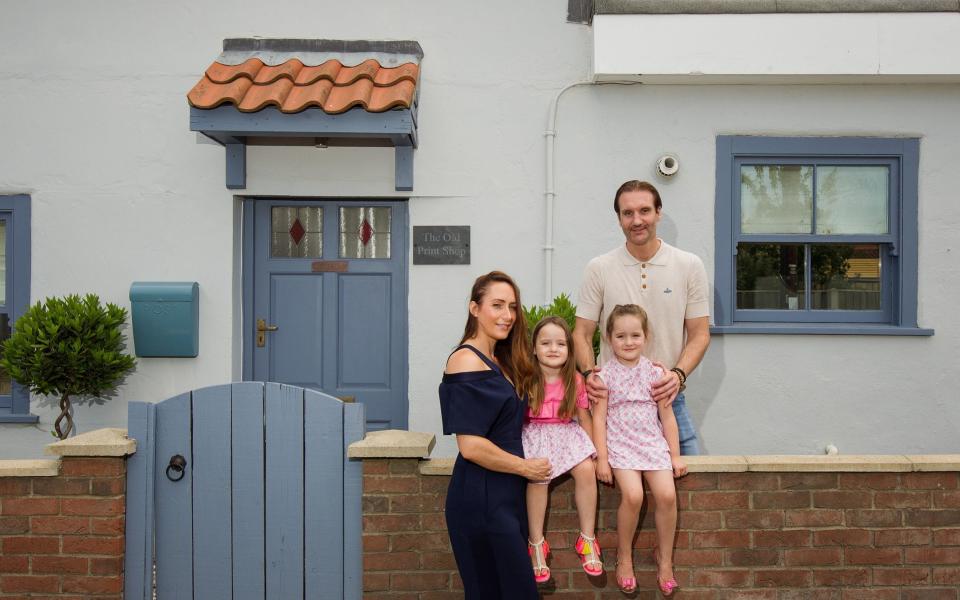
It’s not just barns and warehouses that can be converted into cosy and architecturally interesting homes. Many smaller commercial buildings, once they’re no longer fit for their original purpose, can be made into living spaces – with a little imagination.
Such conversions have become more common as tough trading and increasing rents and rates on the high street has led to more small businesses shutting down. The rate of office-to-residential conversions grew by nearly 40 per cent between 2016 and 2017, according to agents Savills.
Tiny conversions have much more character than a soulless unit in a block of flats, as enterprising converters have discovered. Joe Green and Natasha Stroulger were looking for a project near their home in Norfolk when they discovered The Old Print Shop in the pretty town of Holt, a few miles from the scenic North Norfolk coast. It had been repossessed and was not in great shape.
“It had been converted to a one-bedroom property and had been a long-term let but it was very run-down, pretty grotty and dirty,” says Stroulger. Green, 39, had run buy-to-let properties since he retired as a footballer and coach, but the couple decided this property would be an ideal holiday let.
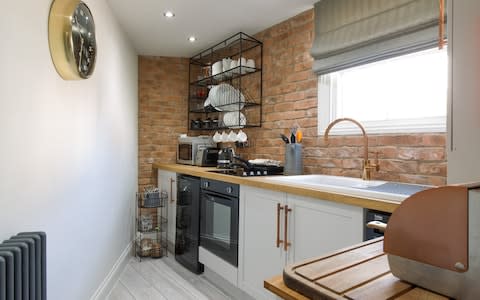
“Holt is an amazing town, full of character, with art and antique galleries, cafés and shops selling local produce,” says Stroulger, 35. “The project had to be financially beneficial for us but we also wanted to show people Holt, and what North Norfolk has to offer.”
The couple bought The Old Print Shop in January this year and immediately got stuck into the renovations, even though their twins, Bella and Ava, were only three at the time.
They wanted to transform the unloved property into a stylish and comfortable cottage, and for their guests to “fall in love with their surroundings”. This was a pretty tall order, given its condition.
“We didn’t alter it structurally, but we ripped it back to a shell inside and took the kitchen and bathroom out,” says Green. “We got people in to do the trades, but we did all the ripping out, sanding down, a lot of filling and all the decorating, including the exterior.” They wanted a luxurious, relaxing feel, so they put in a stylish wet room, and installed a beautiful contemporary stand-alone bath in the bedroom.
“We couldn’t fit the bath we wanted into the small bathroom, so we decided to put it in the bedroom, which adds to the wow factor,” says Stroulger.
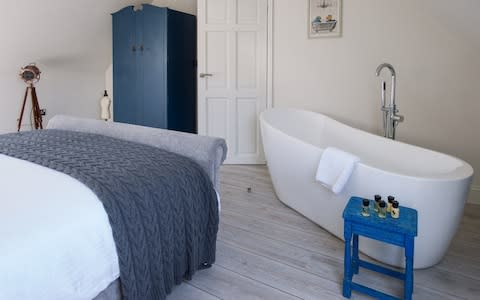
The bedroom also has a “statement wall” covered with what look like huge decorative tiles but are in fact plaster panels from Spain. They create visual impact without taking up space, and the same trick is used around the fireplace in the sitting room, enlivening the white walls.
In such a small property, the best use of every space has to be considered. On the tiny landing outside the bedroom, Stroulger has made a dressing table from one she found in an antiques shop in Holt. The space under the stairs in the sitting/dining room has been used for a small freezer, for which there’s no room in the quirky triangular kitchen.
The couple avoided wall units in the tiny kitchen to prevent it looking too cramped, fixing a rack above the oak worktop for crockery instead. A hanging system on the back of the kitchen door stores the ironing board.
“The kitchen would have looked too clinical with just white walls and units, so we covered one wall in reclaimed brick slips to give it some character,” says Stroulger.
She and Green spent £30,000 on the renovation, including furniture, having bought the property for £175,000. They welcomed their first guests in late May and bookings are going well (the cottage can be booked through Niche Retreats). The couple are hoping to make back what they spent on the renovations within two years.
They also love the chance they had to give The Old Print Shop, once an important part of the community, a new lease of life. “Several locals have come past and said they remember it when it was the print shop; one man said he’d had his daughter’s wedding invitations printed here,” says Stroulger.
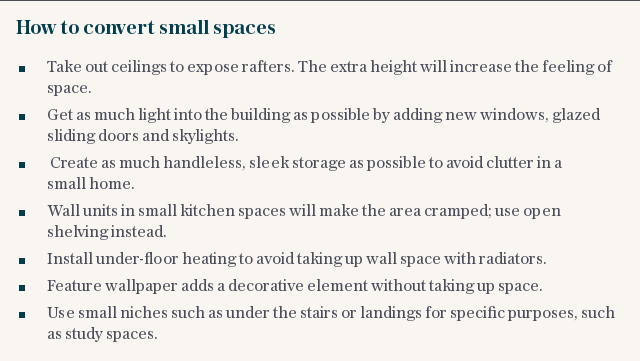
Shops make fine conversions, but so do even smaller buildings. Roger Dean has lived happily for four years in an old telephone exchange.
He spotted a for sale sign on the single-storey, 550 sq ft building in Fulbourn, near Cambridge, while out walking his dog. “It’s in a lovely spot right next to the Fulbourn Fen nature reserve,” he says.
“It had outline planning permission for a one-bedroom conversion. I thought it could make a really unusual home.”
Dean, 59, was renting nearby when he bought the building in 2009. He had done up a couple of properties but had never taken on anything like the old exchange. It sits in a conservation area and could not be extended, so he had to find imaginative ways to make the best possible use of the small space.
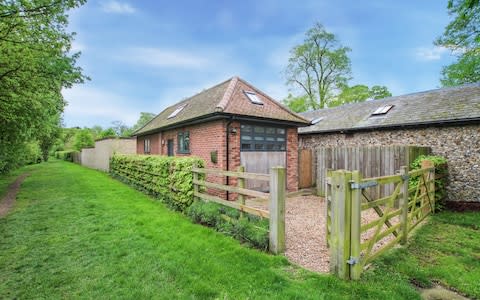
Dean, an electrical engineer, project-managed the build himself, employing a structural engineer and acting as labourer.
“It was just an open space inside with a concrete floor, a partition wall and an outside loo,” he recalled.
“One of the first things we did was dig up the floor to lower it so I could get enough headroom for a mezzanine bedroom.”
Dean also took out the ceiling, opening up the space to the rafters. “That gave me a 15ft ceiling, which is dead space but makes the place airy so it feels bigger.”
Again, owing to the conservation area, Dean couldn’t add new window openings. But he was allowed skylights in the roof, and he replaced all the old Crittall-style windows with new timber double-glazed casement frames.

“With a small conversion like this, you need to get as much light in as you can. I had eight Veluxes put in the roof,” Dean says. “The front door is designed to mimic the garage doors that were on the property when I bought it, because the planners wanted to keep the look utilitarian.”
Open plan was the only way to go to make the most of the space, with an L-shaped kitchen at one end plus stools for dining, and a bathroom at the other end tucked under the mezzanine bedroom.
A spiral staircase leads to the light-filled bedroom, where glass balustrades allow more light to filter up from below. Low-level storage has been built along the bedroom walls because of the restricted height. Underneath the solid oak flooring, underfloor heating keeps the room cosy in winter.
Dean has enjoyed living in his quirky conversion, which took nine months to complete and cost £65,000. But now it’s time to move on, and he has sold his home for £275,000 through Cheffins.
“It’s the nicest spot I’ve ever lived in,” he says. “I just want someone to love it like I have.”

 Yahoo Finance
Yahoo Finance 